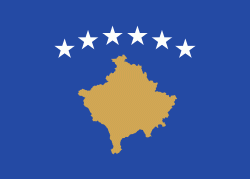Kačanik (Komuna e Kaçanikut)
Kaçanik (Kaçaniku) or Kačanik (Качаник, ) is a town and municipality located in the Ferizaj District of southern Kosovo. According to the 2011 census, the town of Kaçanik has 15,634 inhabitants, while the municipality has 33,409 inhabitants.
The municipality covers an area of 220 km2, including the town of Kaçanik and 31 villages.
The founder of the town Koxha Sinan Pasha called the town Kaçaniku. In 1660, Turkish writer and traveler Evliya Çelebi visited Kosovo and wrote that the town's name derived from the Turkish word kaçanlar in reference to a group of Albanian bandits that operated in Üsküb and used the region of Kaçanik as a hideout. As the Kaçanik area was used as a hideout for the Kachaks, Koca Sinan Pasha built the town fortress to keep out the Kachaks.
The municipality covers an area of 220 km2, including the town of Kaçanik and 31 villages.
The founder of the town Koxha Sinan Pasha called the town Kaçaniku. In 1660, Turkish writer and traveler Evliya Çelebi visited Kosovo and wrote that the town's name derived from the Turkish word kaçanlar in reference to a group of Albanian bandits that operated in Üsküb and used the region of Kaçanik as a hideout. As the Kaçanik area was used as a hideout for the Kachaks, Koca Sinan Pasha built the town fortress to keep out the Kachaks.
Map - Kačanik (Komuna e Kaçanikut)
Map
Country - Kosovo
 |
 |
In classical antiquity, the central tribe which emerged in the territory of Kosovo were the Dardani, who formed an independent polity known as the Kingdom of Dardania in the 4th century BC. It was annexed by the Roman Empire by the 1st century BC, and for the next millennium, the territory remained part of the Byzantine Empire, whose rule was eroded by Slavic invasions beginning in the 6th–7th century AD. In the centuries thereafter, control of the area alternated between the Byzantines and the First Bulgarian Empire. By the 13th century, Kosovo became the core of the Serbian medieval state, and has also been the seat of the Serbian Orthodox Church from the 14th century, when its status was upgraded to a patriarchate. Ottoman expansion in the Balkans in the late 14th and 15th century led to the decline and fall of the Serbian Empire; the Battle of Kosovo of 1389 is considered to be one of the defining moments in Serbian medieval history. The Ottomans fully conquered the region after the Second Battle of Kosovo. The Ottoman Empire ruled the area for almost five centuries until 1912.
Currency / Language
| ISO | Language |
|---|---|
| SQ | Albanian language |
| SR | Serbian language |















